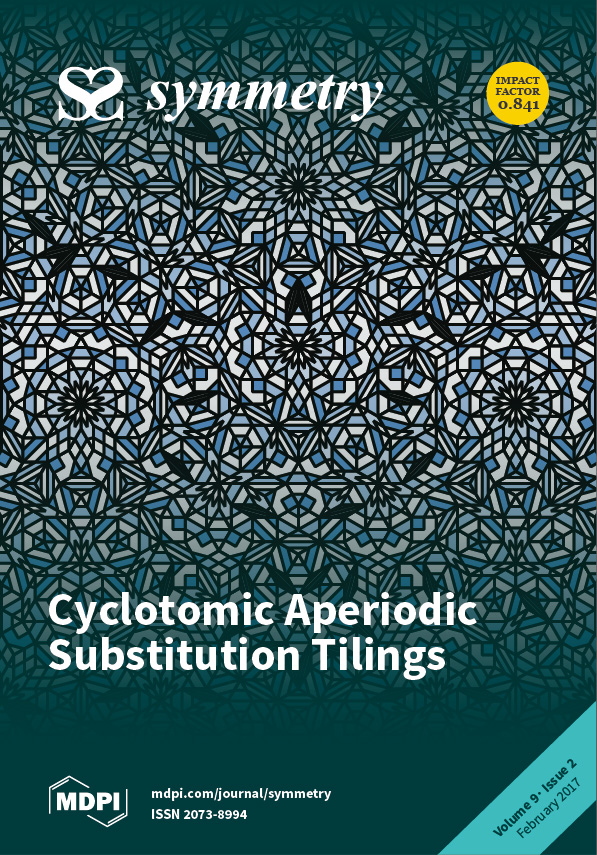Symmetry, Volume 9, Issue 2 (February 2017) – 9 articles
The figure shows an aperiodic rhomb substitution tiling (based on the substitution rules in Figure 14, example n = 6) with individual dihedral symmetry D12 and minimal inflation multiplier under the given boundary conditions. While for “odd n”, the identification of substitution rules is a rather straight forward exercise, the “even n” case tends to be more complex. View the paper
- Issues are regarded as officially published after their release is announced to the table of contents alert mailing list.
- You may sign up for e-mail alerts to receive table of contents of newly released issues.
- PDF is the official format for papers published in both, html and pdf forms. To view the papers in pdf format, click on the "PDF Full-text" link, and use the free Adobe Reader to open them.





